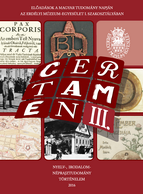
Rövidítésjegyzék és mutatók
The file contains the abreviations used both in the article and in the indexes and the indexes of the names, of the geographical places and of the institutions that are to be found in the articles.
More...We kindly inform you that, as long as the subject affiliation of our 300.000+ articles is in progress, you might get unsufficient or no results on your third level or second level search. In this case, please broaden your search criteria.

The file contains the abreviations used both in the article and in the indexes and the indexes of the names, of the geographical places and of the institutions that are to be found in the articles.
More...
The manuscris adopts a three-fold aim. First it is concerned with the analysis of the decades covering the turning-point in the history of reception, namely the spaces of publicity in the years 1780–1790, the synchronic analysis of the Dugonics edition, of the pervious, parallel editorial plans of the texts and of the literary correspondences – by all these attempting to draw a sketch of the double viewpoint on literature of Gedeon Ráday and to link the turning point of the Gyöngyösi receptionto the person of Gedeon Ráday.Second, based on the micro-textual analysis of the editorial plan we have managed to disentangle the conflicting views of the literature on Gyöngyösi and Kovásznai.Third, by transcribing and presenting the study by Sándor Kovásznai we have presented and explored a source offering further varied possibilities of approach to the researchers of the history of reception related to Gyöngyösi texts, as the viewpoints chosen by the author of the study for interpretation are in line with the expectations of the international critical literature and it calls attention to a series of possibilities for interpretation that are still valid and pertinent.
More...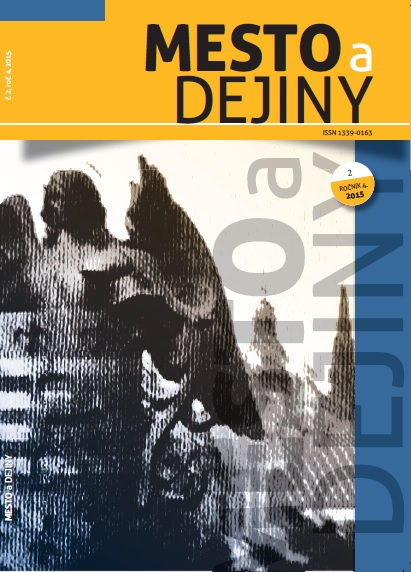
The study presents a brief biography of university teacher, scientist and intellectual Carl Johannes Zinner († around 1810). His activities are connected in a special way with Košice, he worked at the Royal Academy. Interest in the modern history of the United States led him to make contact with Benjamin Franklin. In consideration of this he obtained a special position in the history of Hungary and belonged to the important persons of history at the late 18th century. The study maps Zinner's life, work as well as scientific and political thoughts of Zinner to the recent or past events.
More...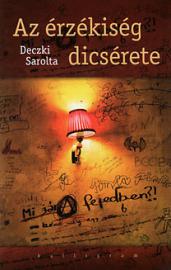
This book is a complation of reviews about the questions of sensuality, physical existence and experience. During the analysis comes up metaphysical, political, governmental, phenomenologycal, poetic, etc. aspects, so everything what has something to do with our physical existence.
More...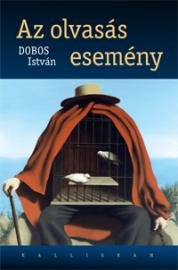
Dobos István's Az olvasás esemény titled book is very important in the view of literary comprehension. The author's attention spread from the begining of the 20th century to the contemporary literature. He analyze the storytelling works depending on consistently elaborated criteria, and with that, he fulfill the expectations of monography genre. With the reinterpretation of the prosaic works of Kosztolányi Dezső, Krúdy Gyula, Móricz Zsigmond, Esterházy Péter or Kukorelly Endre, this book can be read as the era's own history of literatural summary. Beside the interpreatiton of works he shows the contemporary literature's significant changes while validate the international literature research's perspective.
More...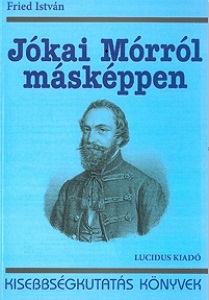
Having received a fresh impetus in the past decade, research on Jókai has opened a new chapter in the history of the novel of Hungarian Romanticism, especially in that of Jókai interpretations. Jókai perceived as the storyteller of the Hungarian big prose has been replaced by an author of modern thinking who would regularly try his hand at new possibilities offered by prose epic; an author who was simultaneously the popular writer of national literature and a writer reacting to European novelist attempts in his own way; an author whose place in world literature is only now beginning to take shape. This collection of studies explores the somewhat neglected areas of the Jókai scholarship. The analyses strive to show how a couple of Jókai works establish the kind of prose that speaks the same language as other European literatures, and at the same time, how they break the ground for a more complex and more “modern” novel that converses with our present. This volume, while touching upon some Jókai works that have been not been discussed so far, sketches the portrait of a writer who, in the cover of his novels, loves to experiment and is open to what the world has to offer.
More...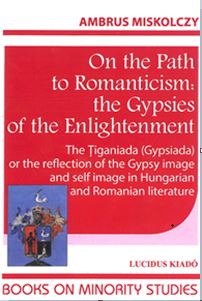
A reconstruction of the history of Gypsiada will be attempted with the analyses of the work and the historic meaning of its message. It is an ironic writing, its treatment allows irony, too. Our irony could also be self-irony, because Gypsiada is not only about those Gyspsies of past, but could be also, say, about Hungarians too. It is also true in the case of Budai-Deleanu what the Hungarian literary historian János Horváth remarked about the poem of János Arany: A nagyidai cigányok (The Gypsies of Nagyida), that it was ‘a bitter charge against ourselves because of our own vices’ The analyse of this work see later on.
More...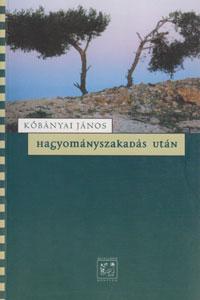
Most of the essays in this collection have been first published in the periodical Múlt és Jövő (Past and Future). The author deals with the question: What does it mean to be a Jew in today’s Hungary. He analyses the past experiences and values and takes as example the biography and lifework of Sándor Scheiber, Aladár Komlós, Károly Pap, Imre Ámos - and as contemporary Ágnes Heller.
More...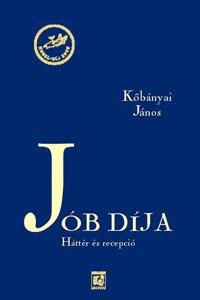
Job’s Prize began as an epilogue to The Depths of the Man – an anthology of the writings of Imre Kertész published in the magazine Múlt és Jövő. It is a separate work and a supplement, the two works, separate, but together as one, aim at some kind of stereo effect. The editor of the magazine and compiler of the anthology János Kőbányai sought out the general narrative behind the life-work of the Nobel Prize-winner, what material constitutes the history from which Imre Kertész raised and unfurled his own “Fatelessness”. Four consecutive eras of Hungarian Jewish history form the meta-narrative of this extraordinary achievement and its reception: the rapid but poorly founded Jewish assimilation of the Reform era and the reserved manner of acceptance; then the collapse of this process about a century later, or the Hungarian Holocaust so peculiar; followed by a period of enforced amnesia, that denied Jews any integrated form of identity; finally, contemporary times after the political change, which in the field of everyday politics tried to rewrite the Hungarian narrative, or in Kőbányai’s words: “to remove the actors from the stage”. This is the background to the birth of the work of Kertész and the failure to accept it in Hungary, but also to the generous reception of the novel all over the world, unprecedented in the annals of Hungarian literature since Janus Pannonius. In the second part, the author analyses the startled reception in Hungary of Kertész’s Nobel Prize and the intellectual discourse as it evolved in its wake.
More...
Does a Hungarian Jewish Literature exist? Aladár Komlós analyses and approves this question in this monograph, written in the early 1940ies. After the Shoa the author reviewed his opinion and not even made an attempt to publish his work. The first edition of this monograph has been published posthumous, in 1996.
More...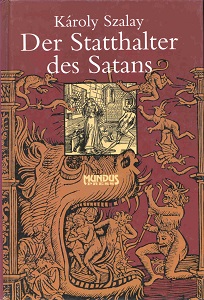
Der Statthalter des Satans ist ein unegewöhnlicher historischer Roman. Schauplatz ist Ungarn in der ersten Hälfte des 17. Jahrhunderts. Noch befinden sich die Türken im Landesinnern. Der Habsburger Kaiser ist bereits Herr über das Land, teilt aber seine Macht mit den Aristrokaten. Die herausragenden Gestalten dieser Epoche sind der später unter geheimnisvollen Umständen verstorbene Miklós Zrínyi, der Palatin Ferenc Wesselényi, der Theoretiker der Gegenreformation Péter Pázmány sowie der grosse siebenbürgische Fürst Gábor Bethlen. Der Held des Romans ist eine aus unsicheren Quellen hervorgegrabene, schriftstellerisch trefflich bearbeitete satanische Figur: László Listius. Dieser vom Teufel besessene Giftmischer, unbarmherzige Mörder und unzüchtige Päderast hat möglicherweise bei den Jesuiten gelernt und auch Gedichte geschrieben. Seine Intelligenz stellt er aber in den Dienst seiner unbändigen Leidenschaften. Mit teuflischem Erfindungsreichtum hält er den Palatin in Schrecken, und durch die Alchimie gerät er auch in Kontakt zum Kaiser selbst. Gleichzeitig terrorisiert er auf sadistische Weise seine Umgebung und entschlüpft immer wieder den Fängen des Gesetzes. Die mitreissende Erzählung enthält entsprechend der Intention des Autors eine wichtige Erkenntnis: In der Gesellschaft sind fast immer unerklärliche dunkle Kräfte verborgen, die, wenn sie an die Oberfläche dringen, nur um den Preis schwerer Opfer zu bezwingen sind.“Károly Szalay has dug himself so deep in the 17th century that it clearly deserves admiration: for instance, he publishes two letters in the novel which we read in the total belief that they are contemporary documents. However, in actual fact, they were both written by Szalay! That is, once again we experience the style mimicry that Kálmán Thaly produced with the “authentic” 17th century Kuruts poems… However, our author is able to evoke the air of the 17th century not only with the style of the era but also with his ability to create the right atmosphere… I am truly surprised that no one has yet considered turning this novel into film…”(The Governor of Satan)Albert Beke (1996)
More...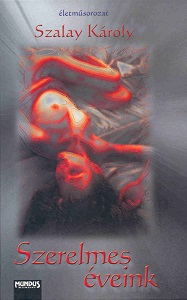
“I believe that not many in Hungarian literature painted love so coarsely in its charm. Theconcept is consistent and succeeds in creating its own peaks: expressing the rich contents of eroticism,of bodily fulfilment.Szalay also describes the lives of funnily pitiable characters. There is an archangel hoveringover the destructively filthy flow and flood of university expulsions. Luis Majer’s shrunk astral body,too, turns to nothing, just like a shadow when dusk falls. …Yet, the subject of our nostalgia is youth,that of our sympathy is the omniscient fog-knight, and that of our love is Gabi Udvari.Are you still alive, and where have you disappeared to, Gabi?Her character turning into a woman, a mature human being, enchants not only the characters ofthis book but also the reader. Because, after all, in their lamented boyhood, who was not wrappedaround the fingers of a genuine city student girl in the process of learning what love is? However,Gabi is more than that. She is the missed opportunity, the eternally regretted completeness…What we have unfolding before us is a dimming picture, yet glittering with colourful lights,which is animated and enjoyable throughout, a peculiar drawing, with exciting shades, of the lostimage of our common ground.”(Our Years in Love)József Domokos (1985)
More...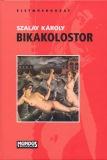
Our Years in Love (1985) and Parallel Relations (1988) only cover a period of ten years: from1947 to 1956. Bull Monastery covers thirty. The first volume is that of youth, full of blaze, energy,impulse, irony and eroticism. Sweeping style, vibrating action, spiced up with colourful sexual images.Bull Monastery is a novel of manhood and, simultaneously, of the case history of absurdity (a slovenlysociety – using Elemér Hankiss’s term), full of painful nostalgia, memories, bitterness, frustration,resignation, and desperate, “opposing” pantheism just for the sake of it: insistence on the sincere loveof sincere nature. It is slower-moving but none the less witty in style for it, with a flow of internalmonologues disguised as long dialogues, anecdotes radiating a wry atmosphere, philosophicalthoughts, and a manic adoration of the truth.”
More...
“The book was one of the great successes of the 1988 Book Week…The sex scenes, perhaps overly explicit in their details, the action carryingthe reader away, and mainly, however, the most convincing, most authenticand most sincere description to date of the events of the 1956 uprising,which form integral parts of the story, probably all contributed to thesuccess. This topic has been manipulated by so many and in so manydifferent ways that we who actually experienced them in real life recognizethem at last.”(Parallel Relations)Emil Kolozsvári Granpierre (1988) “I do not particularly wish to celebrate this kind of elimination of traditional taboos sinceliterary criticism, as is widely known, has, for a long time, been of the opinion that the bluntdescription of erotic topics is aesthetically indifferent; the only thing that matters is how the subjectfits into the novel composition, and what aesthetic value the description in itself has. Well, in thisrespect, the eroticism of the Szalay novels is aesthetically correct and is, at times, assigned none otherthan a “poetic” role… Csarody, the protagonist of the novels, is incessantly faced with thedevelopments of tyranny.. mostly, however, with the political comedy of the era which is described bySzalay in a series of particularly apt episodes. These episodes are real satires…”(Parallel Relations)Béla Pomogáts (1989)
More...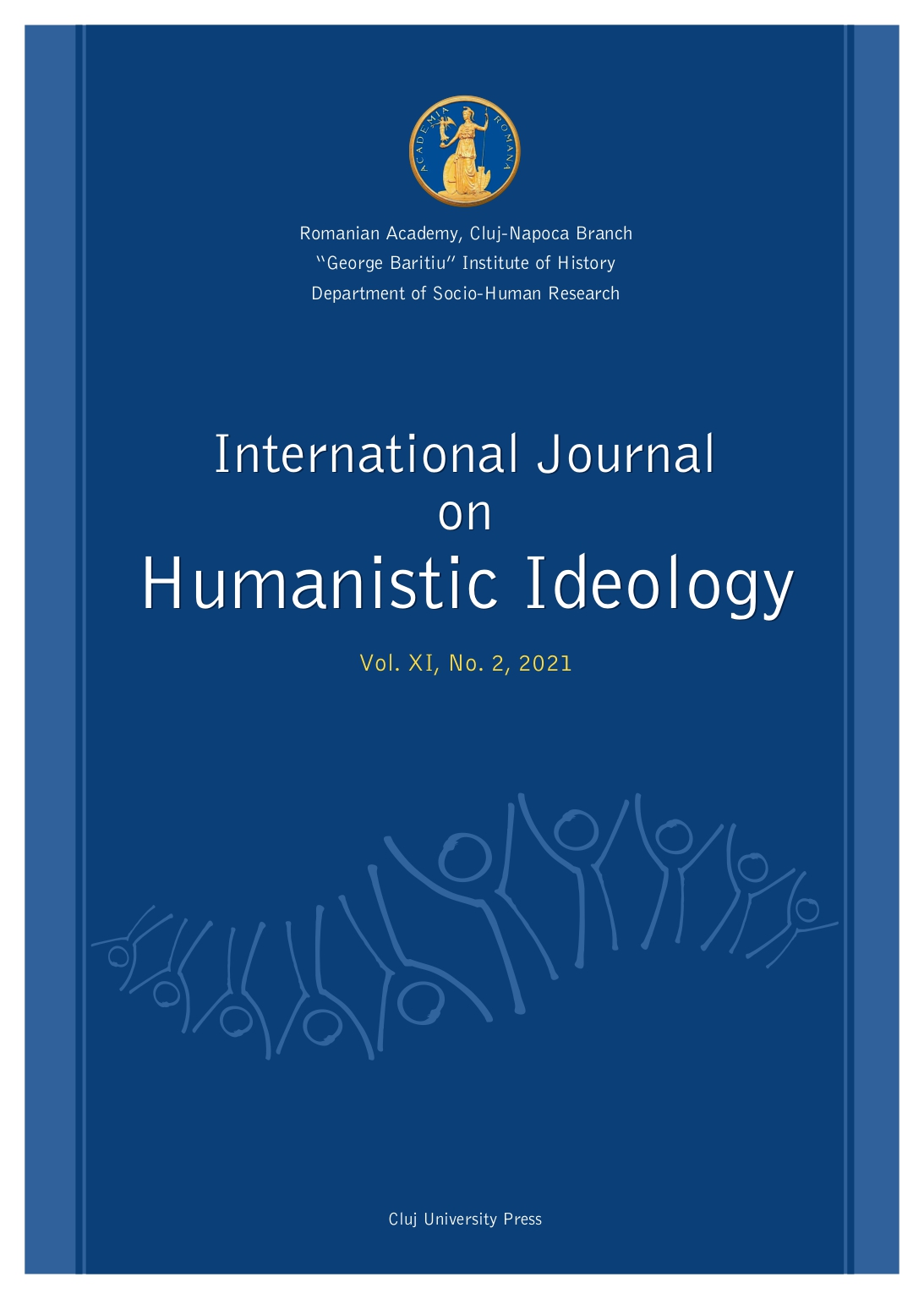
This essay will try to define the beginnings and contemporary events of Hungarian Kierkegaard research, but it must be made clear that we can only examine the most significant works written about Kierkegaard. Before the Second World War, Hungarian culture and intellectual life were closely linked to German intellectual life. Therefore, the reception of Kierkegaard’s philosophy in Hungary can only be discussed regarding the period coming after the publication of his works in German. Moreover, it is an important fact that Kierkegaard became known to European culture through his German reception. It must be said that studies on Kierkegaard before the Second World War were probably deeper and more detailed than they were after the war. The 1980’s and 90’s saw a rebirth of the reception of Kierkegaard, mainly due to political changes going on in Hungary.
More...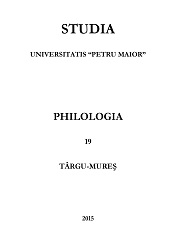
The article discusses the concepts of interior exile, dissidence and nostalgia starting from the ideas of John Neubauer, attempting to draw similarities and typologies in the larger picture of 20th century European political and cultural immigration. The cases of Central-East European writers such as Thomas Mann, Frank Thiess, Imre Kertesz or Ferenc Fejto or the Russians Victor Şklovsky and Joseph Brodsky (offered as examples by Svetlana Boym) are considered relevant.
More...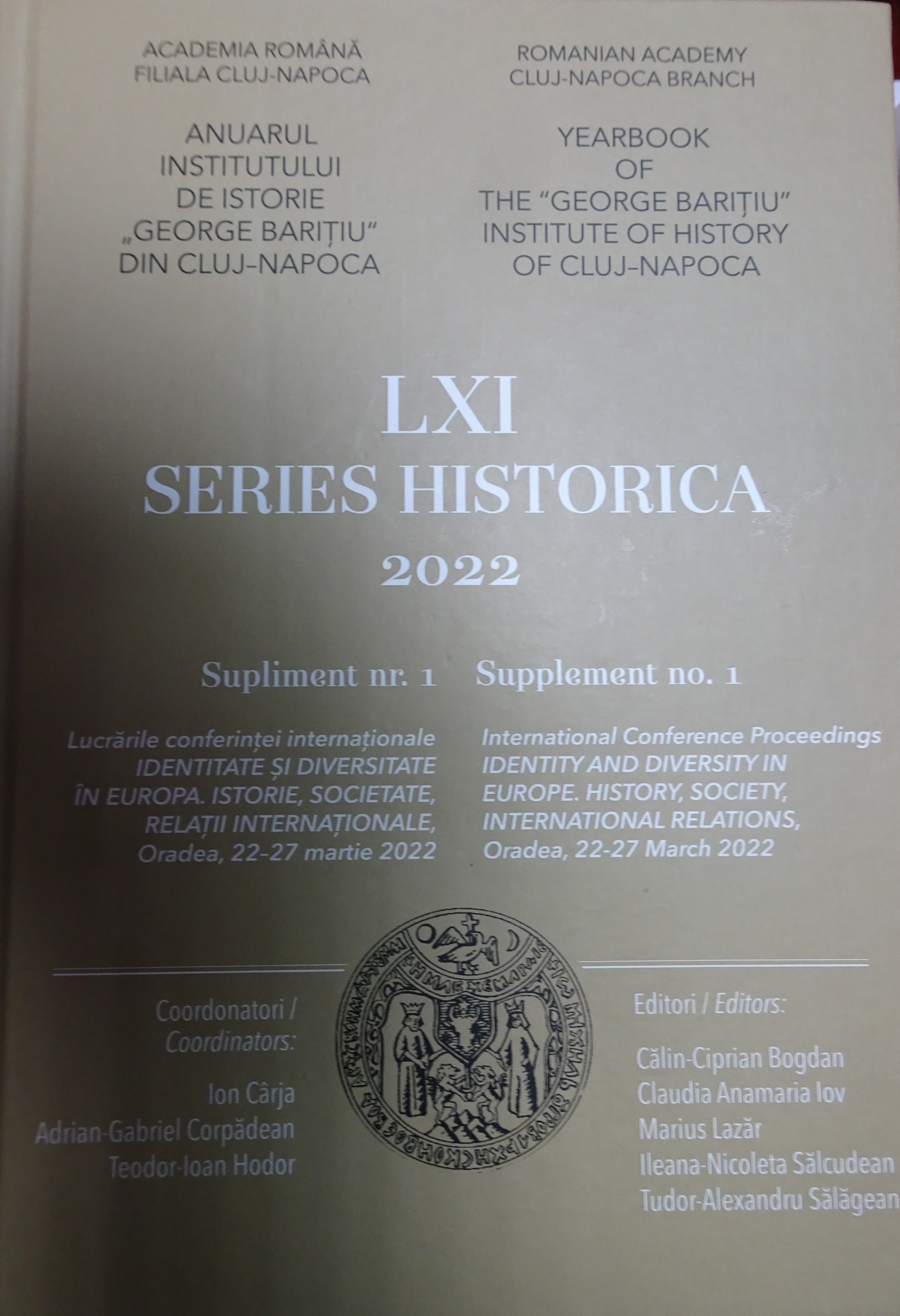
The vast field of history(ies) connected with the geopolitical space of Central Europe has been written and modified, or simply deleted and reinvented several times. Populations that have been under the domination of great empires for centuries (Ottoman, German, Russian and Austrian) have borrowed from each other not only customs and traditions, but also a new mentality and a new manner of judging things. Little by little, the works of literature and various authors of many small countries were raising their own voices to create a discursive consistency. Many texts from decades ago are nowadays – besides being literary samples – also credible documents about a particular social behaviour. With making these cultural, social and political issues more visible for the public, important Central – European novelists used to create, during decades, a major cultural project about understanding the multiple factors of crisis in Europe. As a result, authors like Franz Kafka, Herman Broch, Danilo Kiš, Bruno Schulz, Robert Musil, Paul Celan, Milan Kundera were setting literary lines and terms to clarify a high range of subtle phenomena regarding politics and mentalities, dominating the space of Old Europe. Suggesting a new epic model, literary subjects directly related to the political and social collapse, a different style, and a different textual architecture, these writers were imprinting the reader’s mind with reflecting on a new epic pattern: the split of identity under the horrible effect of war and then under the political repression that followed in totalitarianism. In addition, all other sensitive issues that the Central European writers prefer to write about were passed through the filters of subjectivity and each one was revealing the experience of living in a particular area of restriction, isolation and fear. By proposing an epic product focusing on imbalances, frustrations, resentments and fragile individuals, the Central European author is revealing a powerful fiction, ready to underline the desperate need of re constructing a new and maybe a better view of a Modern European Identity – through literature and culture.
More...
This publication is a conference proceedings comprising the papers presented at the conferences entitled "Cult, Culture, Identity" and ''Community and Strangers" organized by the Department of Human Sciences of Sapientia Hungarian University of Transylvania in Miercurea Ciuc. The topics are greatly varied, but all of them are linked to the subject of the community and are approached from the perspective of interdisciplinarity.
More...
In the study we wish to outline the way in which the Trianon treaty (1920) penetrated the field of literature and the way the shifts it fostered shaped Romanian and Hungarian societies. We will try to capture the way in which major historical events, such as the Union of 1918 or the Treaty of Trianon was reflected in Romanian and Hungarian literatures. We will reflect on the way the collective mind resonates to major political changes and how these changes and events have polished and shaped mutual representations. If there is no so-called Trianon literature in Romanian literature, as there is in Hungarian literature, we will try to spot the reactions to this event in terms of Romanian Hungarian relations and in terms of reactions of Romanian intellectuals to the Transylvanian current.
More...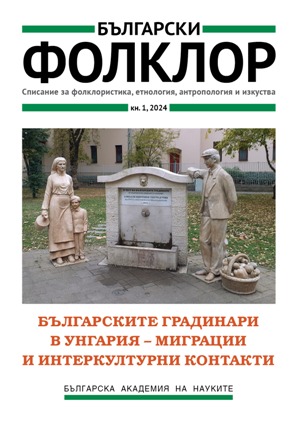
The article is dedicated to a hitherto unexplored element of the Bulgarian–Hungarian relationship from the period between the two world wars – the Hungarian popular movement (March Front), whose ideas found inspiration from the Bulgarian gardeners in Hungary. The movement that later the National Peasant Party put the “Garden Hungary” program on its banner in which the agrarian reforms and the wider civil participation of peasants in Hungarian society held a special place. Many of the elements in this program drew examples from the Bulgarian gardeners in Hungary with their specific organization of labour, collectivist spirit, and a sustainable economic model linking the land work and the new market relations at the end of the 19th and the beginning of the 20th century. In his study “Towards Garden Hungary” Imre Somogyi described in detail the techniques that Bulgarian market gardeners used in vegetable growing. In the social philosophy of László Németh, “Garden Hungary” had the meanings of a socio-economic model that could eliminate rural poverty.
More...